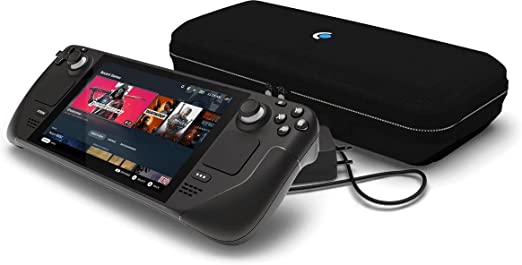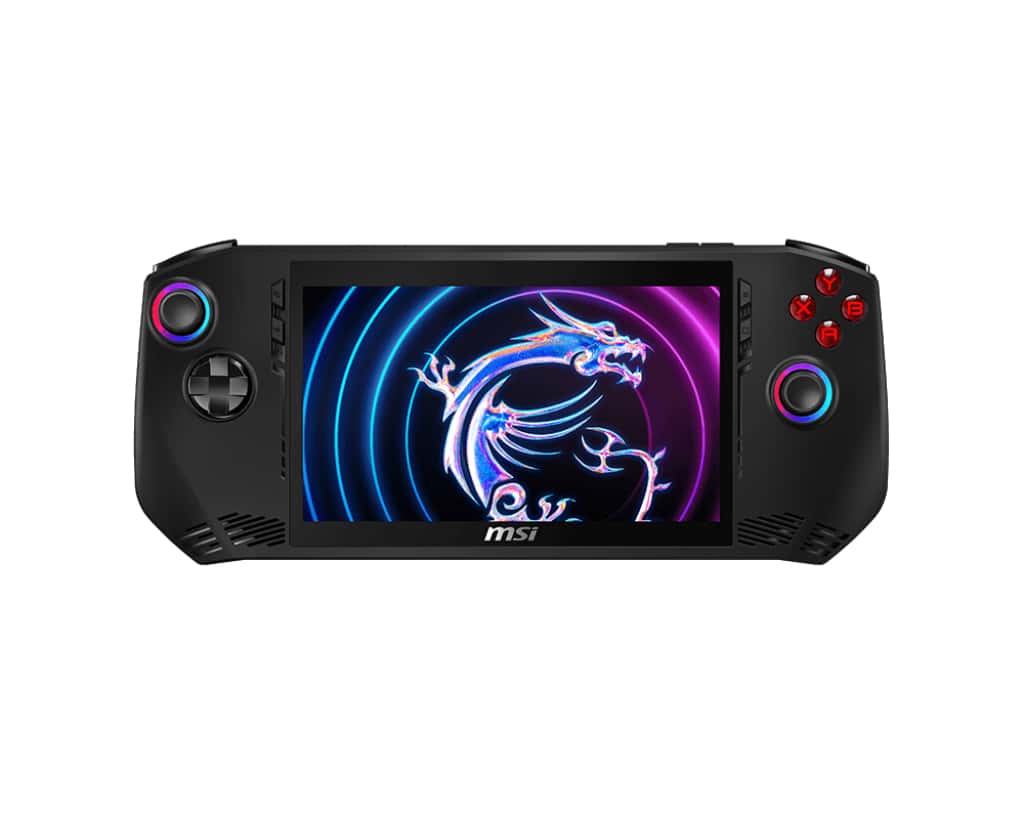ASUS ROG Ally X vs Steam Deck: finally time to switch to the Windows alternative?

Table of Contents
No more waiting around, the ASUS ROG Ally X has been launched, but how does it compare to Valve’s fan-favorite Steam Deck? Today we’re going to compare ROG Ally X versus Steam Deck to figure out what sets them apart. Age gap-wise, there are a couple of years separating them, and as you may know, the Ally X is an updated version of the Ally we saw launch back in 2023.
Quite a few differences separate these two gaming PC handhelds, and they are for certain two of the most popular options on the market. First of all, Valve has put a ton of effort into maintaining the Linux-based SteamOS in terms of compatibility – and it’s been a real success. On the other hand, other handhelds, including the ROG Ally X, stick to a familiar Windows operating system.
You can now find out where to buy the ROG Ally X following its release, whereas the Steam Deck (and the more recent Steam Deck OLED) have been readily available from Valve for some time now.
Specifications
Let’s compare the specs of the ASUS ROG Ally X and Steam Deck. It’s worth talking about the Steam Deck OLED here too, which benefits from a couple of improvements outside of the panel type.
| Specification | ASUS ROG Ally X | Steam Deck LCD | Steam Deck OLED |
|---|---|---|---|
| Processor | AMD Ryzen Z1 Extreme | 6nm AMD APU, 4c/8t, 2.4-3.5 GHz | 6nm AMD APU, 4c/8t, 2.4-3.5 GHz |
| GPU | AMD iGPU 12CU @ 2.7 GHz | AMD iGPU 8CU @ 1.6 GHz | AMD iGPU 8CU @ 1.6 GHz |
| Architecture | AMD Zen 4 & RDNA 3 | AMD Zen 2 & RDNA 2 | AMD Zen 2 & RDNA 2 |
| Screen size | 7″ | 7″ | 7.4″ |
| Resolution | 1920 x 1080 | 1280 x 800 | 1280 x 800 |
| Panel type | IPS-level LCD | Optically bonded IPS LCD | HDR OLED |
| Refresh rate | 48Hz – 120Hz variable refresh rate | 60Hz | up to 90Hz |
| Response time | 7ms | Not officially listed | <0.1ms |
| Storage | 1TB M.2 2280 SSD | 64GB, 256GB, 512GB | 512GB NVMe SSD, 1TB NVMe SSD |
| RAM | 24GB LPDDR5X | 16GB LPDDR5 | 16GB LPDDR5 |
| Battery | 80Whr | 40Whr | 50Whr |
| Operating System | Windows 11 | SteamOS | SteamOS |
| Dimensions | 280mm x 111mm x 24.7-36.9mm | 298mm x 117mm x 49mm | 298mm x 117mm x 49mm |
| Weight | 678 grams | Approx. 669 grams | Approx. 640 grams |
Display
The first thing we want to talk about is the display, one of the most important aspects of the gaming experience in our minds. The different resolutions affect visual fidelity and performance, so everything is linked here. To start, the Steam Deck has an unusual 1280 x 800 resolution, which is a 16:10 aspect ratio compared to the ROG Ally X’s more standard 16:9 full HD 1920 x 1080. This means the Ally X has the advantage in terms of pixels on the screen, resulting in a crisper image quality. Both feature a 7″ panel, with the exception of the slightly larger Steam Deck OLED.
Where the ASUS ROG Ally X shines is the smoother 120Hz refresh rate – that’s double the LCD Steam Deck’s 60Hz. On top of that, the Ally X (just like the original) boasts support for VRR, allowing for a stutter-free experience via FreeSync Premium, something Valve’s handheld lacks. Overall, the ASUS is on top here, though we were disappointed to see that the Ally X didn’t upgrade to OLED, which would dramatically decrease its response time while improving color accuracy and efficiency.
Battery life
Moving on to battery life now, it’s easily one of the best improvements when comparing the ROG Ally X to its previous model. The new and improved battery life now means that the capacity is double that of the LCD Steam Deck. This implies up to 8 hours of battery life, though of course battery varies wildly based on whether you’re playing a demanding game, or just browsing the web. For comparison, Valve advertises 2-8 hours of gameplay on the LCD model, and 3-12 on OLED. The much larger battery on the Ally X is a big win though and should see competitors following suit in the future.
Graphics performance
Performance-wise, the ROG Ally X is the winner. It boasts much newer hardware as it uses the Zen 4-based AMD Ryzen Z1 Extreme processor, whereas the Steam Deck is based on an older APU on Zen 2. The same goes for GPU architecture, RDNA 3 versus RDNA 2. This is needed to push higher framerates to accommodate the 120Hz refresh rate. On top of better processing power, the ROG Ally X excels from another upgrade compared to the original: 24GB of RAM, on the faster LPDDR5X solution to boot. It’s no surprise to see the Ally X outperform the Steam Deck at the same resolution, but playing at native 800p vs 1080p resolutions will bring performance closer together.
On the flip side, the lower resolution of the Steam Deck gives it some breathing room, and it doesn’t wish to meet that 120 FPS target. Additionally, the Linux-based SteamOS is much less bloated than Windows 11, which both the Ally and Ally X use. Game developers have been catering to the Deck for a long time now, made obvious by the Steam Deck verification system. With that in mind, the Steam Deck still packs a punch and is well-optimized, aiding other aspects such as battery life.
Control scheme
We didn’t exactly include this in our specs table just above since both handhelds feature a familiar control scheme in terms of analog sticks and button placement, albeit with asymmetrical versus symmetrical sticks for the Ally X and Steam Deck respectively. Both devices have 6-Axis IMU Gyro support, though the Deck boasts four back buttons to the Ally’s two.
However, there is one glaring difference: the inclusion of touchpads. The Steam Deck has a dual-touchpad design which is handy for mouse-like movement when browsing or even playing games which lend themselves better to it. Not that we’d be playing competitive FPS on a touchpad, but it is useful. This makes both versions of the Steam Deck more versatile overall.

Price
Finally coming to the price, there is a stark difference. In fact, following the launch of the ASUS ROG Ally X, we’ve noticed reviewers calling it “Way more expensive than Steam Deck”. This is just a fact that holds the Ally X back. Even though we’ve been seeing some great discounts on the original 2023 Ally, this refreshed variant is costly.
- Steam Deck price (MSRP): $399 (256GB) – available on Amazon & Steam store
- Steam Deck OLED price (MSRP): $549 (512GB) / $649 (1TB)
- ASUS ROG Ally X price (MSRP): $799 (1TB) – available at Best Buy
It’s worth noting that while the LCD Steam Deck did originally launch with 64GB and 512GB models, they have since been discontinued and are only available while stocks last. This means we’ve stuck to the readily available versions above.
Alternatives to the ROG Ally X and Steam Deck
Though we’d say there’s no ‘true’ alternative to the Steam Deck given its unique operating system, there are a few other Windows machines out there to consider as alternatives to the ROG Ally X. Furthermore, we’d suggest the Zotac Zone if you want another dual-trackpad design in Steam Deck fashion.
-
-
MSI Claw
- Windows 11 OS
- Up to Intel Core Ultra 7 CPU
- Intel Arc Graphics
- 7-inch 1080p 120Hz IPS touchscreen
- Up to 32GB LPDDR5 RAM
- 53Whr battery
-
Which handheld is the right choice for you?
Choosing between these two mostly depends on what you’ll be using it for. Both are fantastic devices for gaming, and the improvements in the ROG Ally X make it a much more portable option compared to the original, which suffered from battery life issues. ASUS’ handheld takes the prize if pure performance is your number one requirement. This is especially relevant if you’re going to be often docking your handheld and playing on a bigger screen for a more immersive experience.
Budget is another big thing to think about, with the Steam Deck being the best-value option here. The Steam Deck is less power-hungry and more efficient, plus you have OLED model for the best visual experience. It does all of this while costing less. Finally, it has access to a ton of games despite not being based on Windows – however, one limitation is the lack of compatibility with some games’ anti-cheat implementation.





